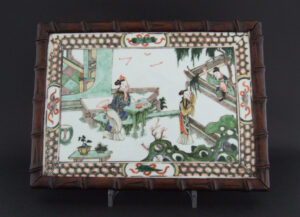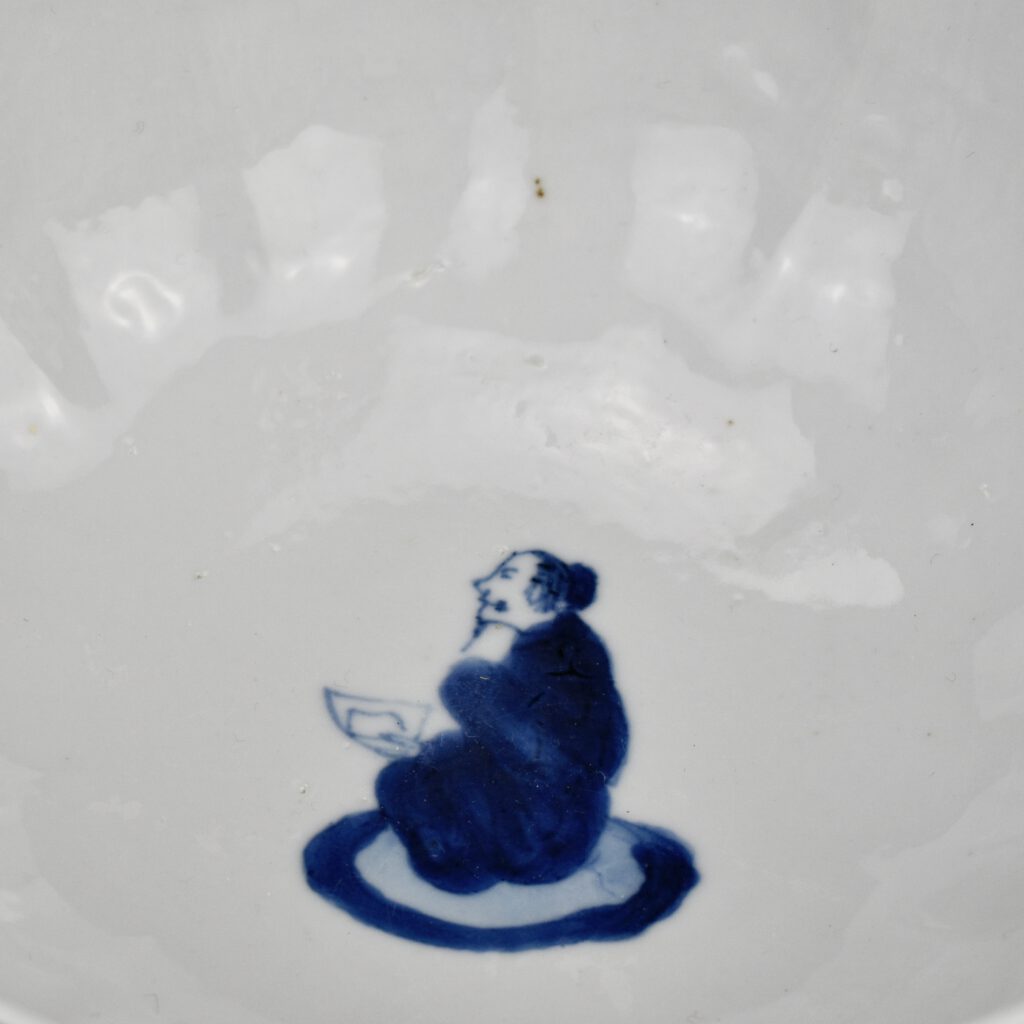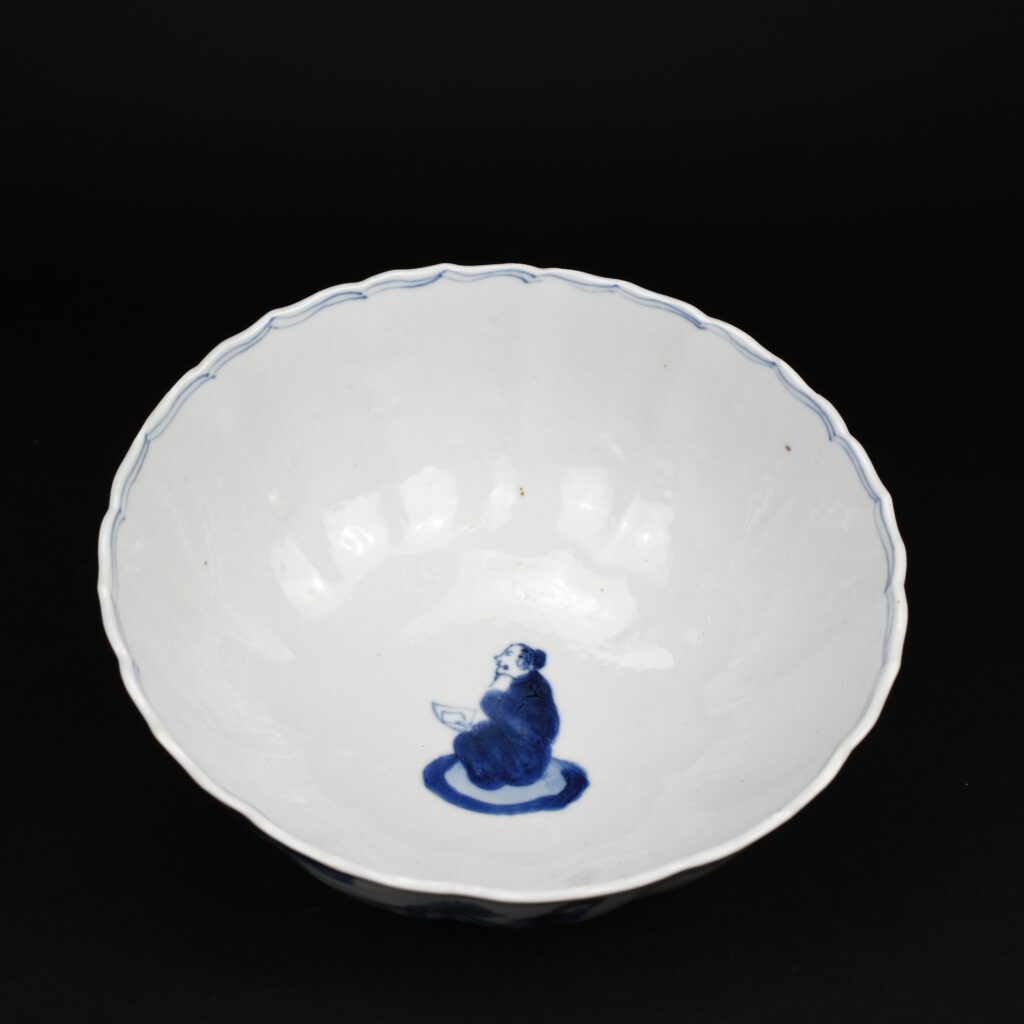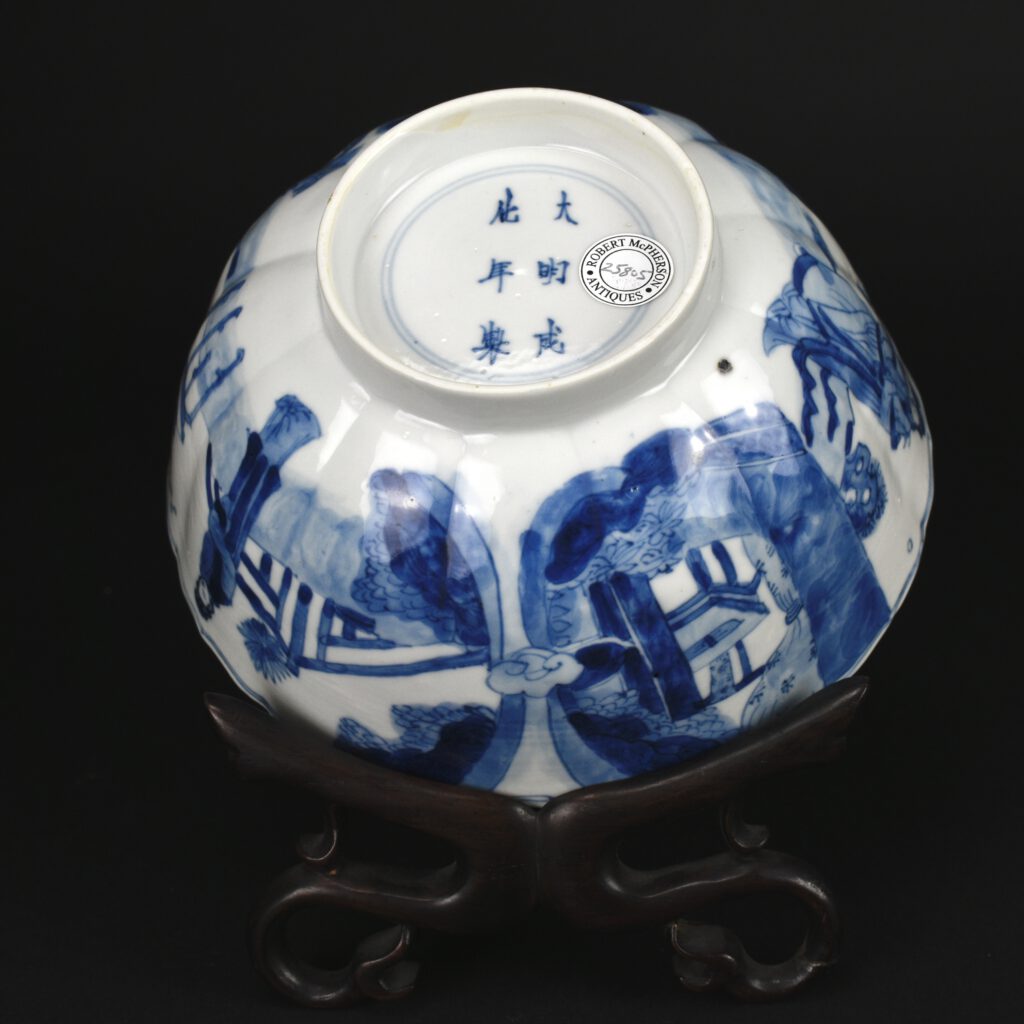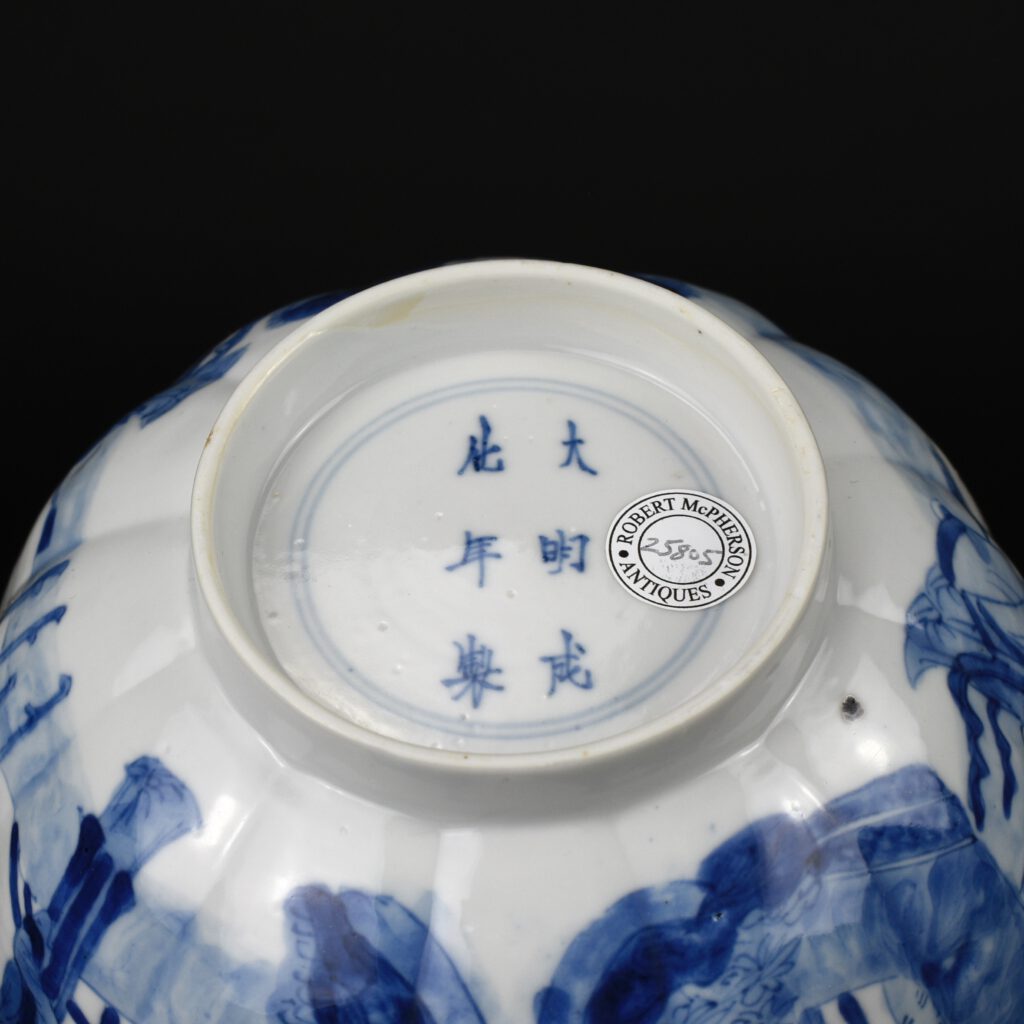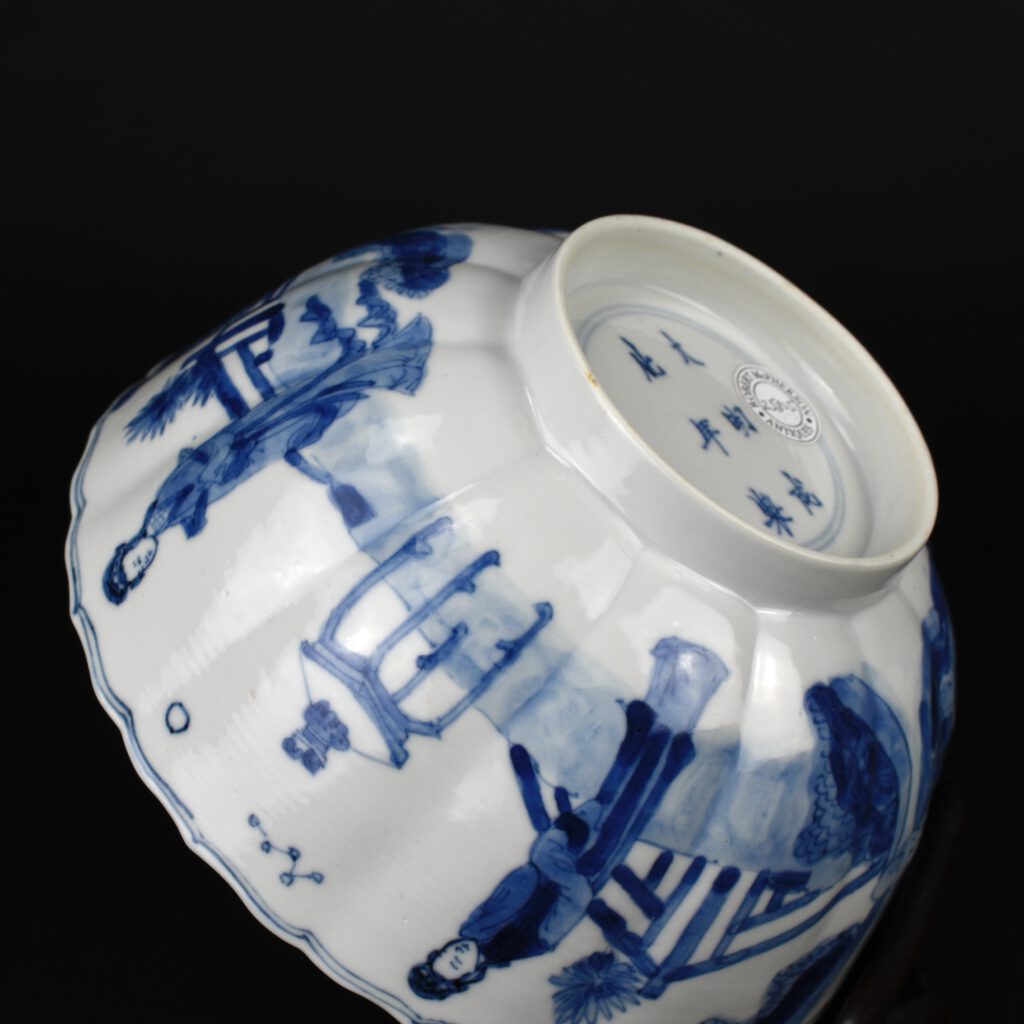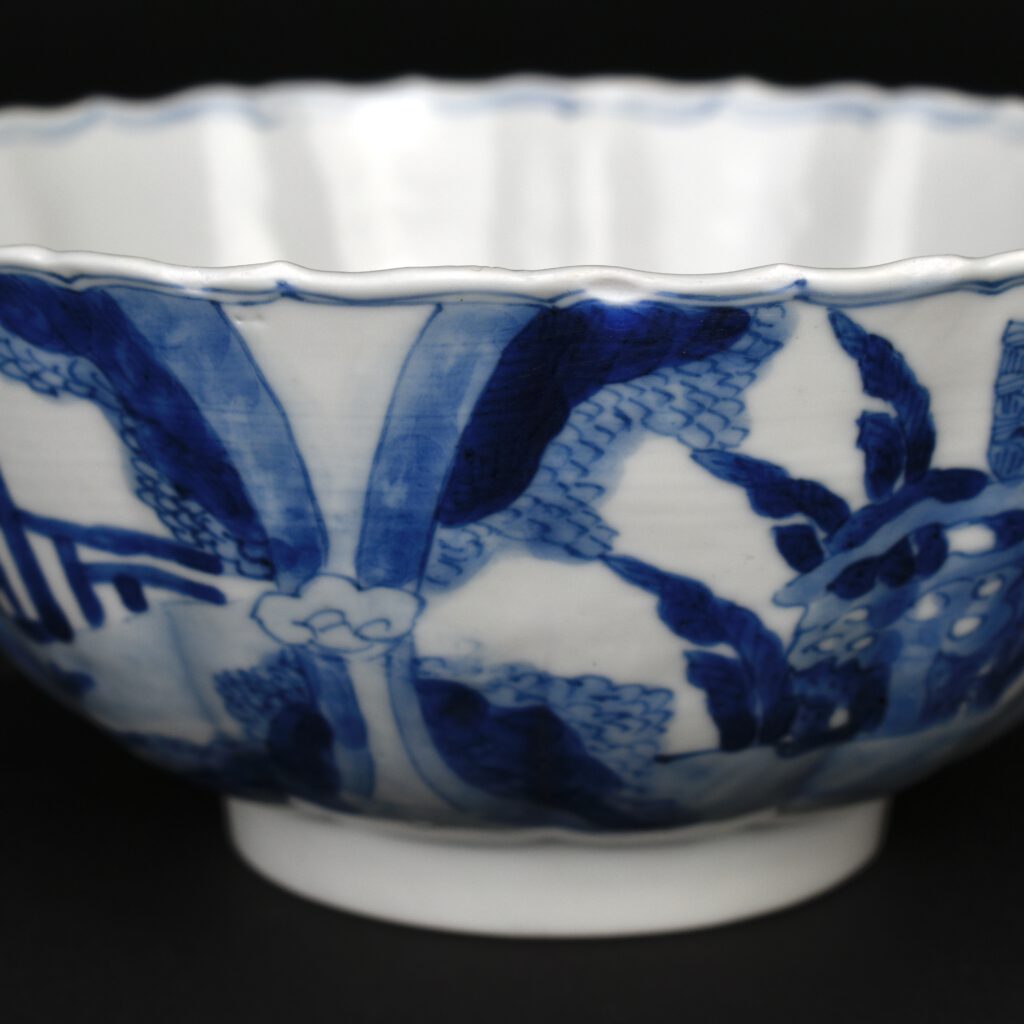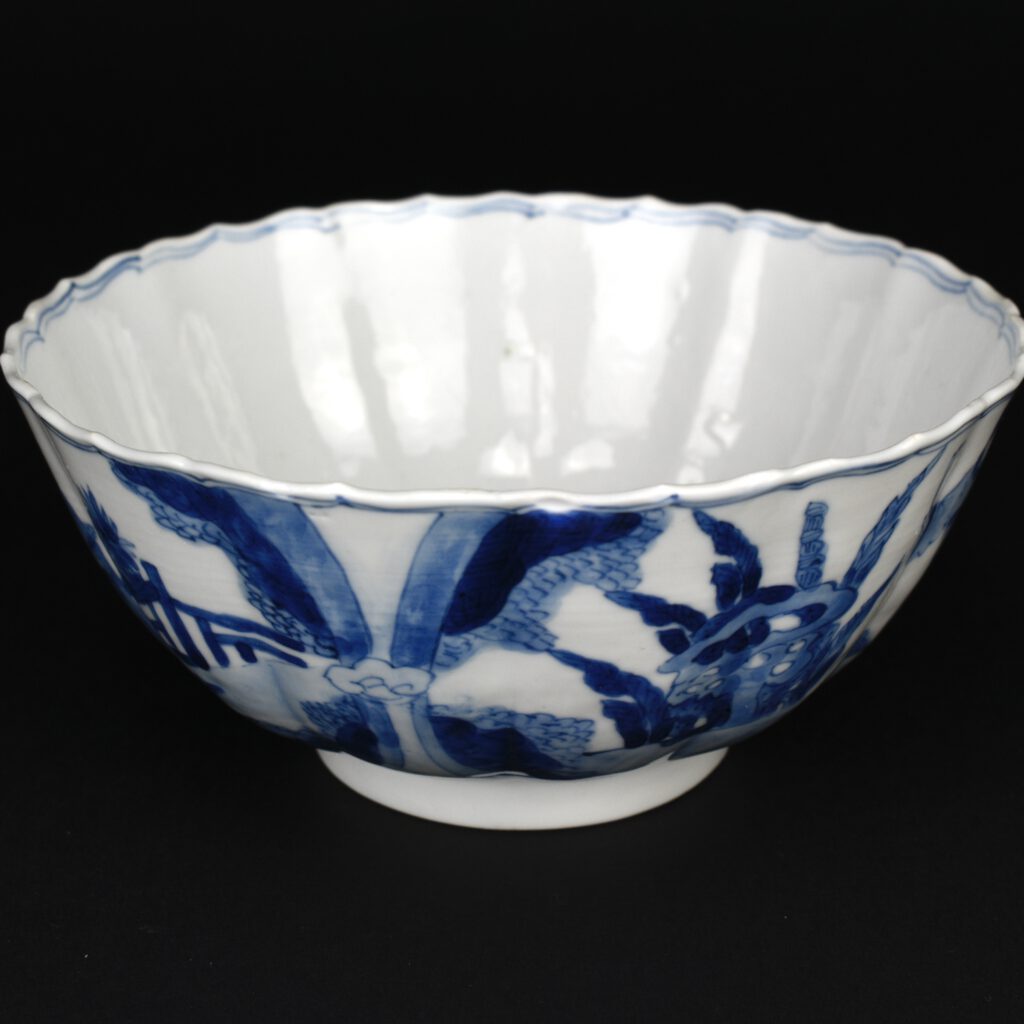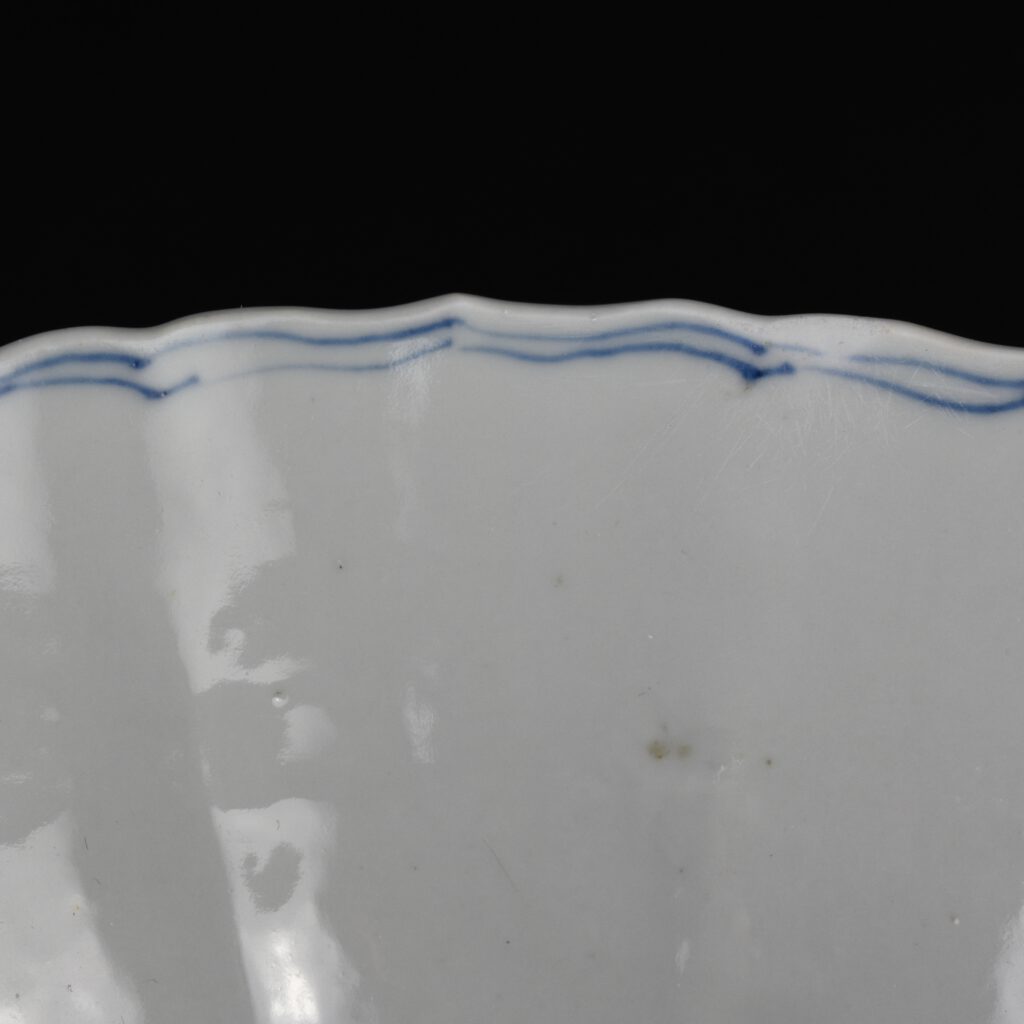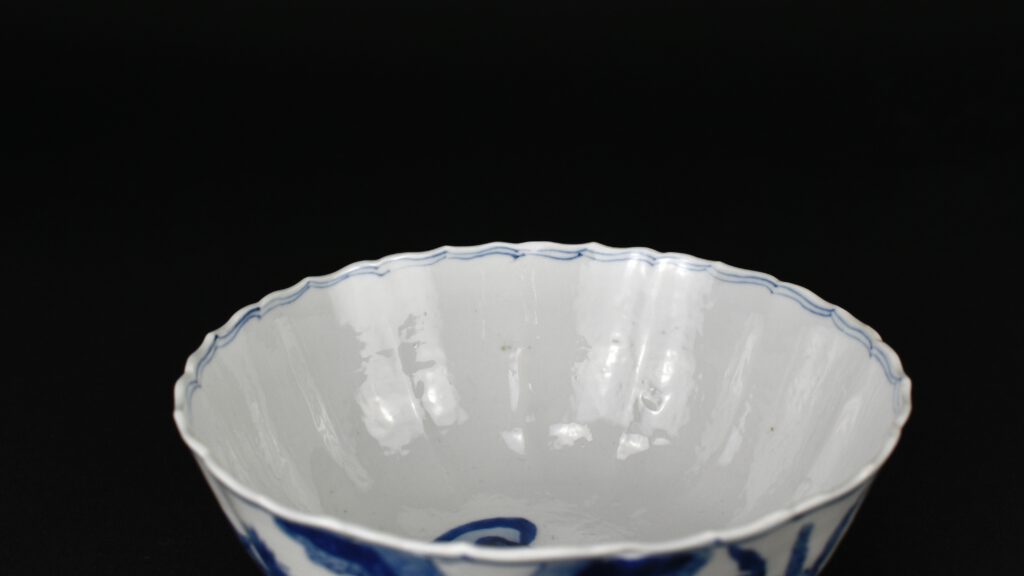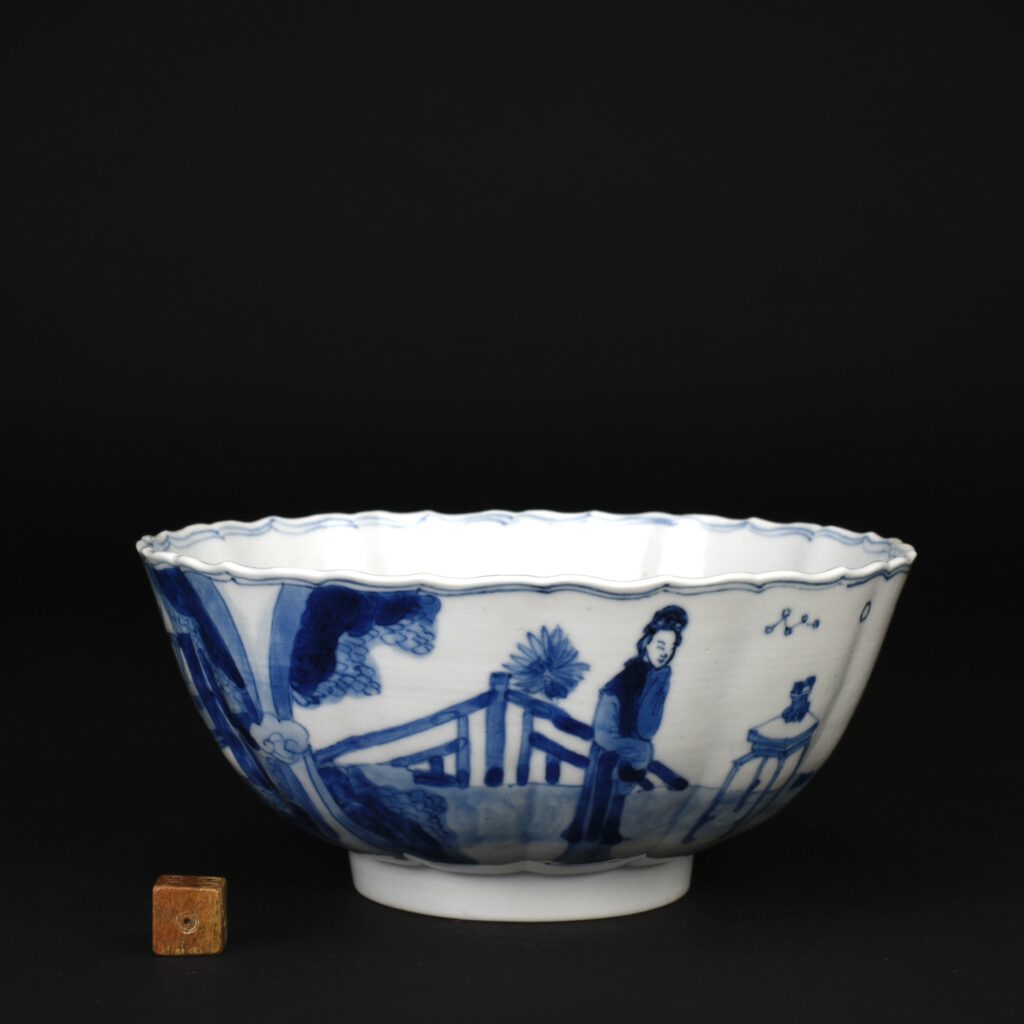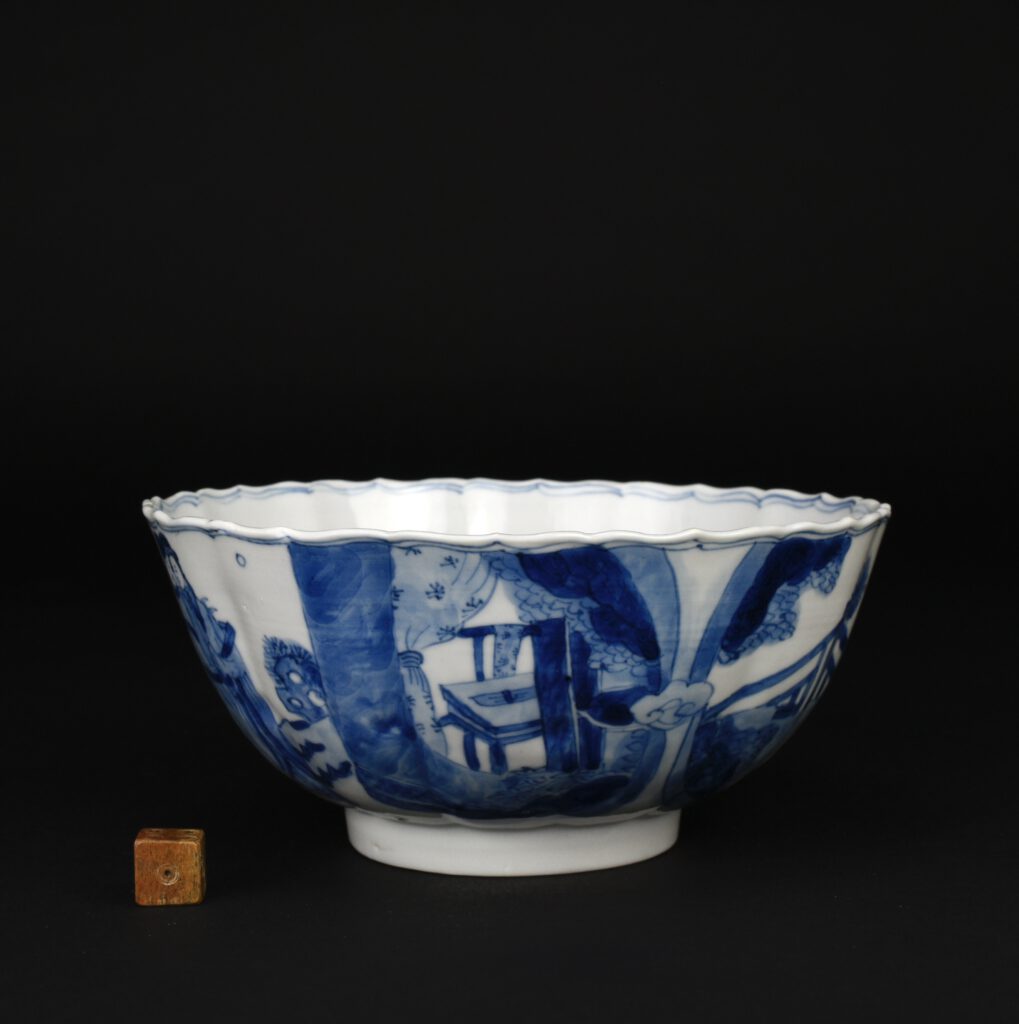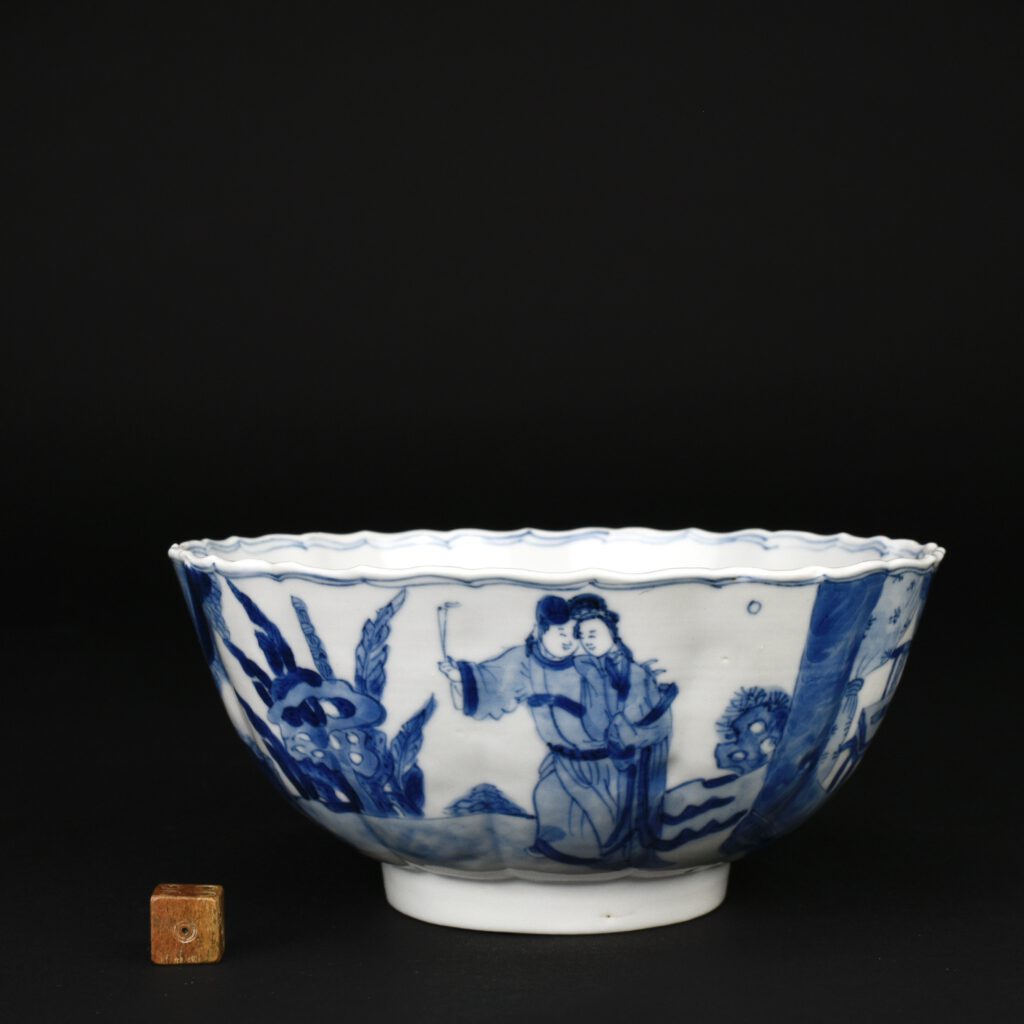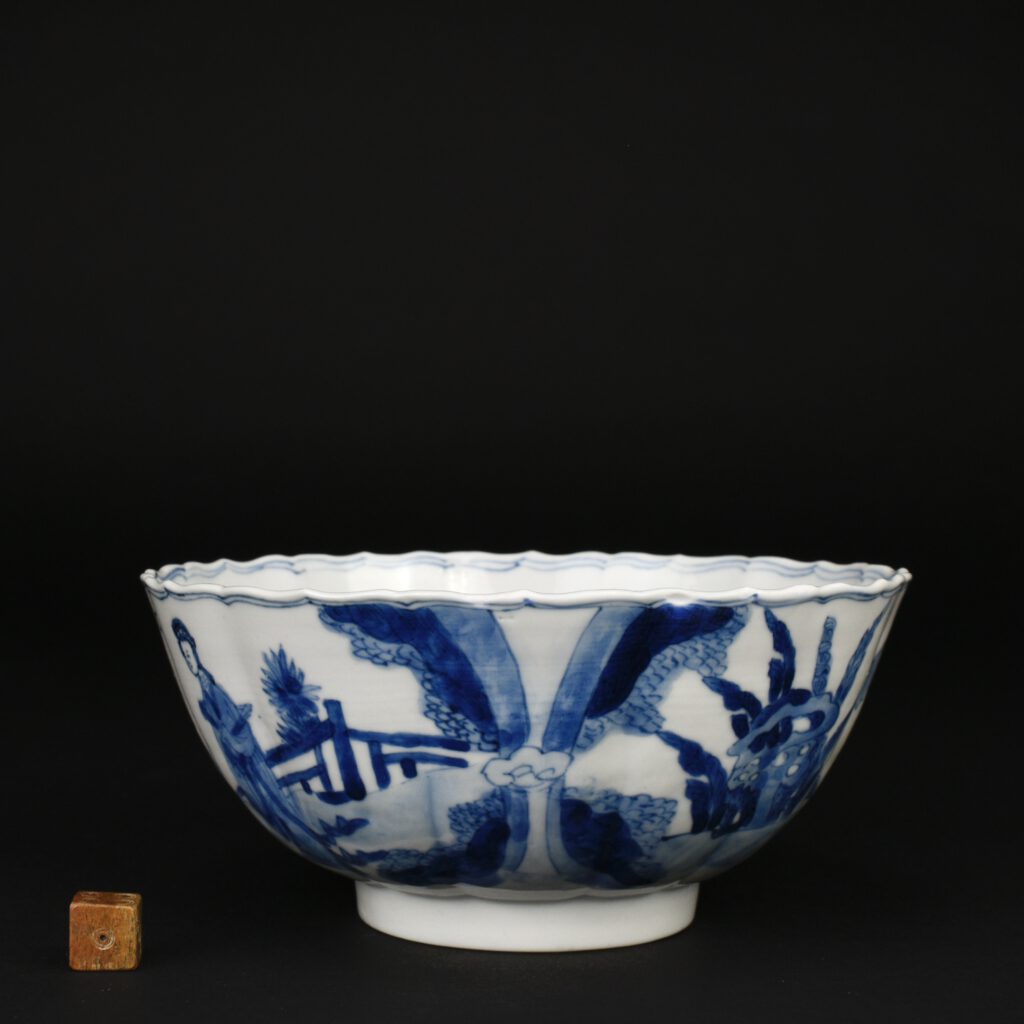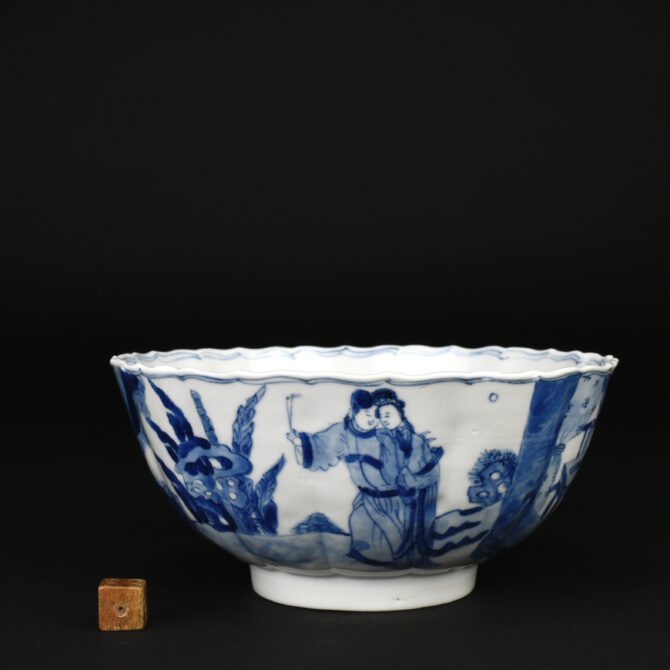
Kangxi Blue and White Porcelain Bowl
A Kangxi Blue and White Porcelain Foliate Bowl c.1690-1710. The base with a six-character Chenghua (1465-1487) mark. This Kangxi period (1662-1722) porcelain bowl is decorated with a scene from The Romance of the Western Chamber (Xi Xiang Ji). This scene is part of the act in the story called ‘Consummation of Love’. Eventually, the Scholar Zhang has persuaded the lady he has been courting to come to his quarters. Zhang is holding a candle in one hand to light the way with his left arm around Lady Yingying’s shoulder. The other elements of this design are generic. I am indebted to Dr. Ni Yibin for his help with identifying the subject matter.
SOLD
- Condition
- There are two chips that which have been slightly polished.
- Size
- Diameter 15.3 cm (6 1/4 inches)
- Provenance
- Property of the Dutch noble family Quarles van Ufford and thence by descent.
- Stock number
- 25805
Information
Reign Marks on Kangxi Blue and White Porcelain :
Kangxi blue and white export porcelain object are sometimes found with the six character mark of the emperor Kangxi (1662-1722) to the base. These none-imperial reign marks are referred to as minyao in Chinese, denoting them as `popular wares` not destined for court use. However the majority of the marked pieces bare the mark of earlier Ming dynasty emperors, some are Jiajing (1522-1566), occasionally Wanli (1573-1620) but by far the most commonly encountered marks are those of Chenghua (1465-1487). David Howard in `The Choice of the Private Trader` (David S. Howard, Zwemmer, 1994) notes that "The Chenghua mark .... was not intended as a forgery, but rather as a compliment to the quality of the piece and to replace the mark of Kangxi who had forbidden the use of his name on porcelain made for export after 1682; a ban which nominally remained in force until the late 19th century". It appears this ban was not enforced, or if it was only partly enforced, as we have had many Kangxi export pieces made after this date (1682) that bare the six character Kangxi mark. It is worth noting that many 19th century copies of Kangxi blue and white porcelain bare a four character Kangxi mark, something you do not on the original, all Kangxi marks on porcelain of the period were of six character form.
Romance of the West Chamber / Xi Xiang Ji
The scene of Zhang Sheng, a young scholar clambering over a wall to meet his young lover Cui Yingying appears frequently on Chinese porcelain of the 17th and 18th century. This is the most recognisable of a large group of designs taken from the West Chamber. It is based on a scene in Act III of this famous Chinese literary work written by the Yuan Dynasty playwright Wang Shifu (c.1260-1336) it was set during the Tang Dynasty (618-907). It has had an enduring appeal, some of the very first narrative scenes decorated on Chinese blue and white porcelain are taken from this story, they were produced during the Yuan dynasty in the mid-14th century and the designs have been used ever since. The story is of young lovers consummating their love without parental approval, and has been called `China`s most popular love comedy` and a `lover`s bible`. At the same time, some have called it potentially dangerous, as there are stories of readers pining away under its influence. There are problems for those of us who wish to identify individual scenes depicted in the West Chamber, these are clearly set out by Craig Clunas in his excellent paper presented to the O.C.S. (A Literary Theme in Chinese Porcelain Decoration, a paper read by Mr Craig Clunas on 11th May 1982, Transactions of the Oriental Ceramics Society 1981-1982). He points out that it is particularly difficult to identify the designs produced during the Qing dynasty. One reason given is there are few reproductions of later editions of the work to compare the designs too, but more problematically the designer, as opposed to the painter, might well have interpreted the scene without any direct reference to the original woodcut. The designs taken from the West Chamber were especially popular during the Kangxi period (1662-1722) particularly in blue and white but they also occur frequently on famille verte of the period. The scene of Zhang Sheng clambering over a wall can be found on blue and white porcelain teaware recovered from the Ca Mau Cargo (Yongzheng period 1723-1735), this particular design was also produced at the period in famille rose enamels.
